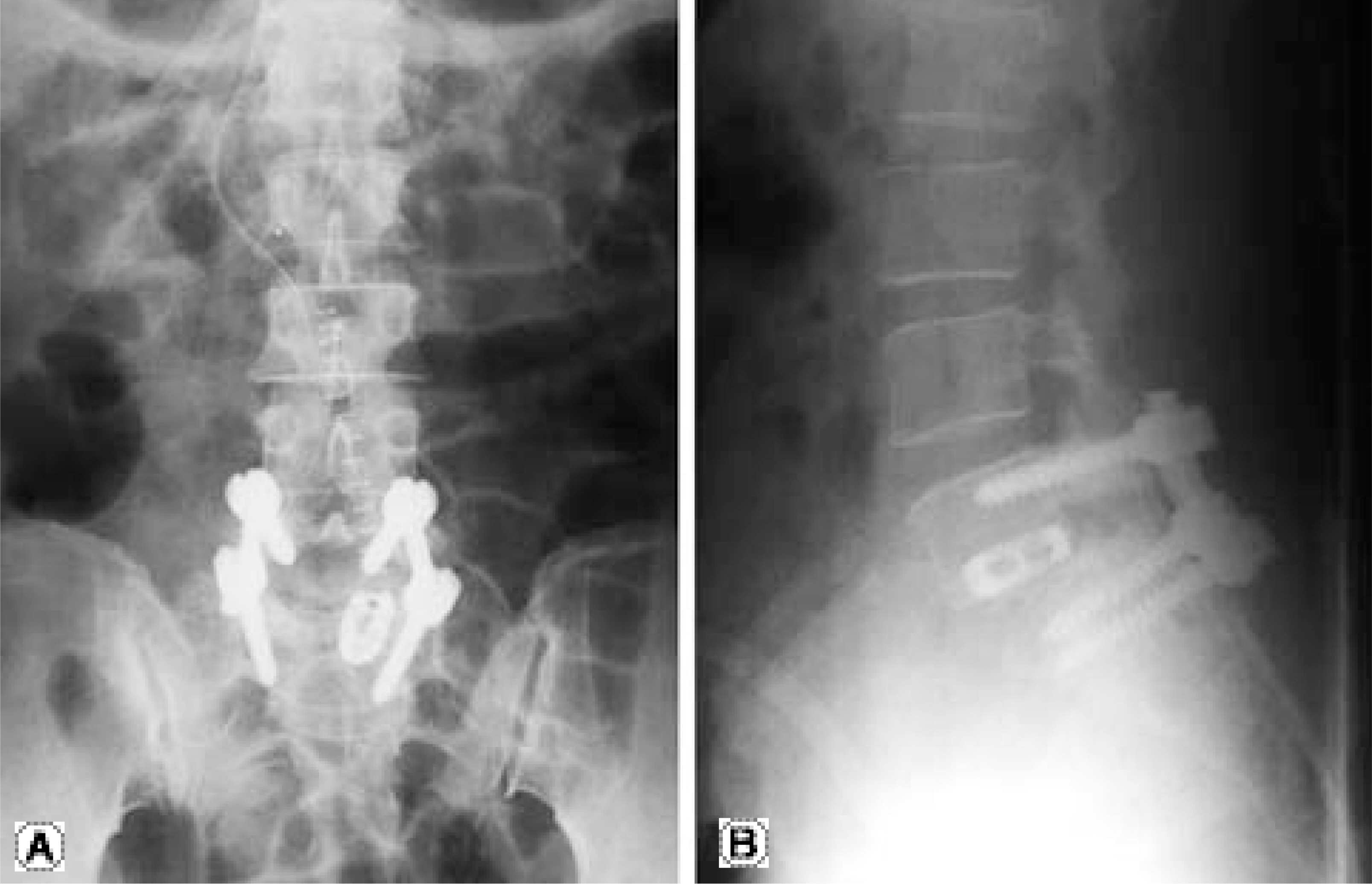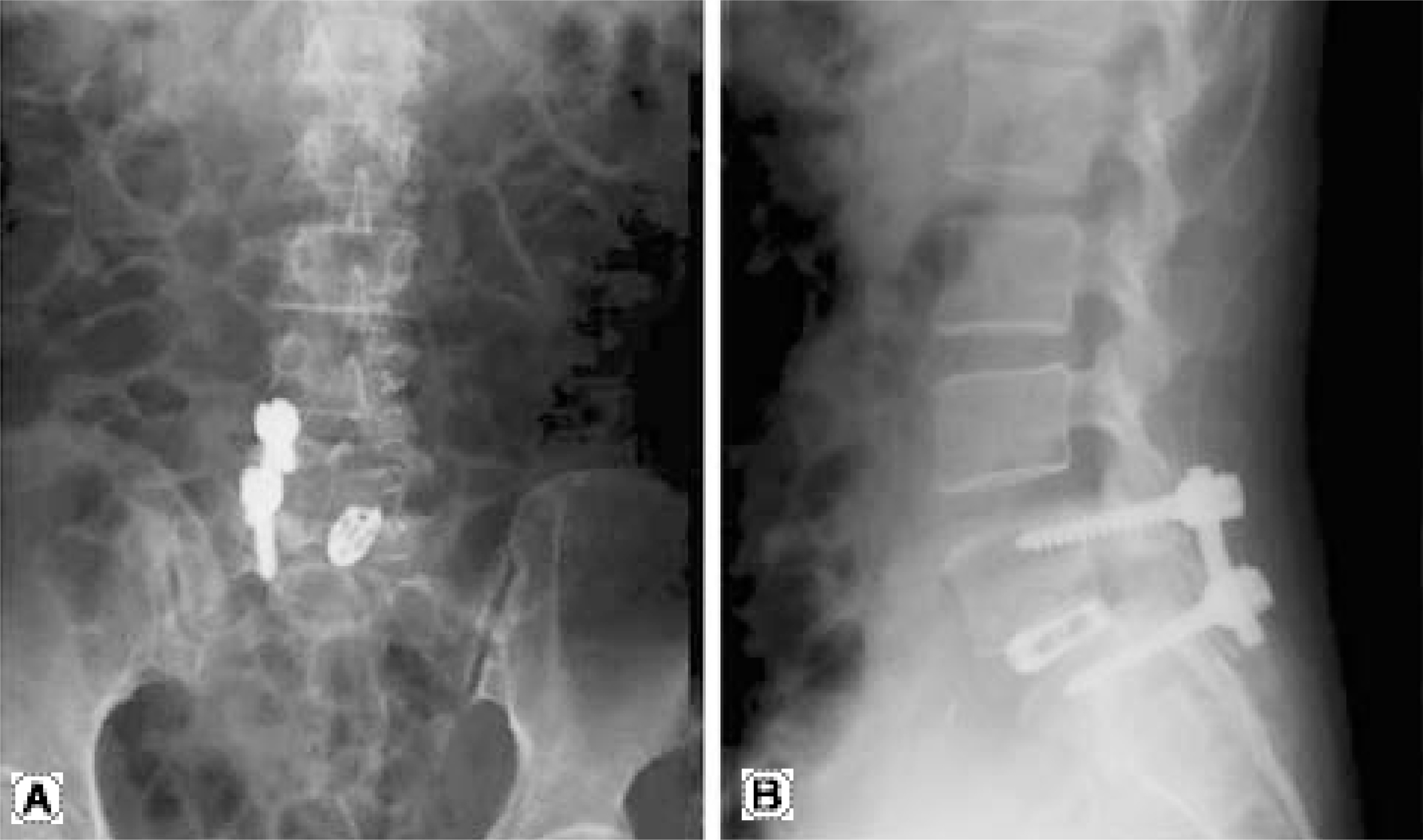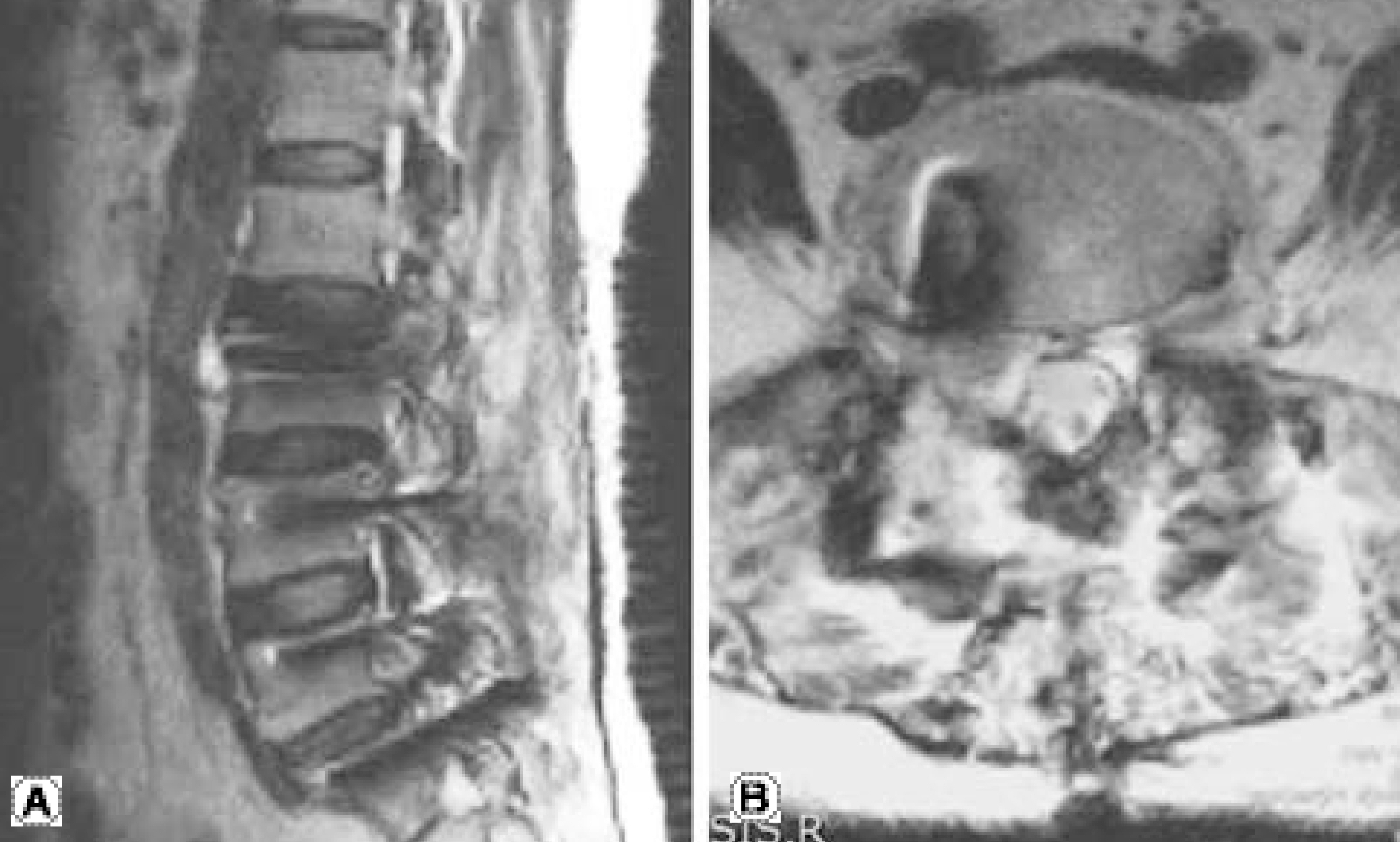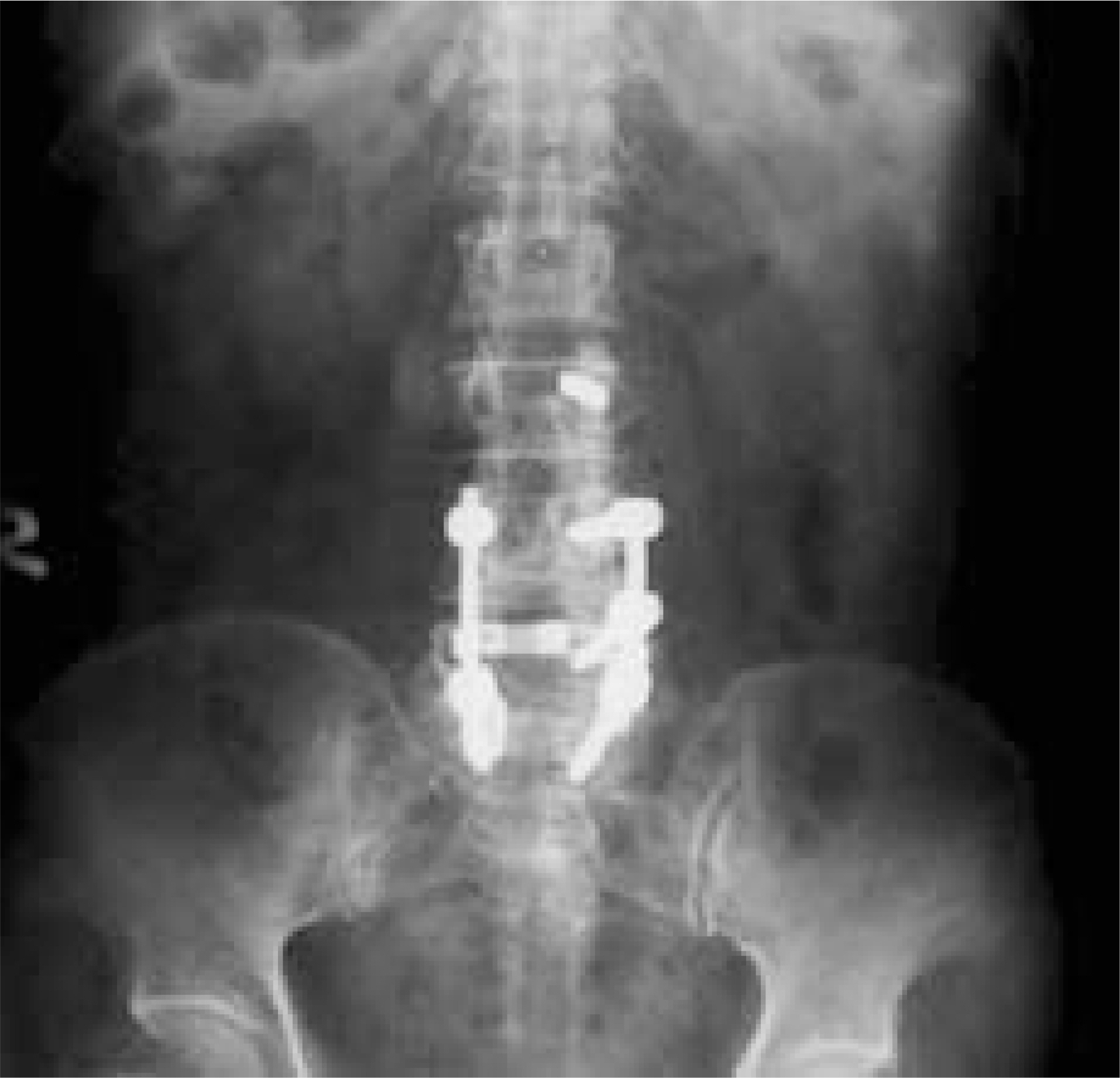J Korean Soc Spine Surg.
2007 Sep;14(3):201-206. 10.4184/jkss.2007.14.3.201.
The Result of Early Decompression of Progressive Neurologic Deficit after Spine Surgery: A Case Report
- Affiliations
-
- 1Department of Orthopedic Surgery, Seoul Sacred Heart General Hospital, Seoul, Korea. niceosu@freechal.com
- KMID: 1941654
- DOI: http://doi.org/10.4184/jkss.2007.14.3.201
Abstract
- Two percent of neurological complications after spine surgery for various reasons have been reported. Most are static or improve with time. We encountered two cases of newly developed, progressive neurological deficits with severe pain radiating along the exiting root after posterior decompression, adhesiolysis, posterior lumbar interbody fusion (PLIF) with a cage for spinal stenosis after previous lumbar spine surgery. When explored, the severely tightened and less movable, edematous exiting root was entrapped by a pedicle without evidence of pedicle violation, direct injury, epidural hematoma or iatrogenic foraminal stenosis. A wider decompression with a resection of the pedicle reduced the root course and made it more movable. Immediately, the severe radiating pain subsided and the neurological deficit recovered. A progressive neurological deficit after spinal surgery for spinal diseases with foraminal stenosis can develop as a result of the inordinate manipulation of the root, which may provoke root edema, root self-entrapment around a pedicle and local ischemia. An image test and exploration should be performed immediately in cases of progressive single root neurological deficits immediately after spine surgery. Total decompression, even with a pedicle resection, should be considered to resolve the neurological deficits.
MeSH Terms
Figure
Cited by 1 articles
-
Analysis of Intraoperative Neurological Complications in High-Risk Spinal Surgery with the Use of Motor Evoked Potential Monitoring
Jin-Hyok Kim, Dong-Ju Lim, Sung-Soo Kim, Se-Il Suk, Min-Kyu Kim
J Korean Soc Spine Surg. 2011;18(3):153-162. doi: 10.4184/jkss.2011.18.3.153.
Reference
-
1). Mayfield FH. Complications of laminectomy. Clin Neurosurg. 23:435–439. 1975.
Article2). Stambough JL, Simeone FA. Neurogenic complications in spinal surgery. (in. Rothman RH, Simeone FA, editors. The spine, 4th ed. ,.Philadelphia: WB Saunders Co;p. 1724. 1999. .).3). Ahn DK, Lee S. Neurologically symptomatic epidural hematoma after lumbar spine surgery. J Koreans Soc Spine Surg. 11:154–160. 2004.4). Shin BJ. Lee JC. Intraoperative spinal nerve root injuries surgery for degenerative low back disease. J Korean Soc Spine Surg. 9:142–147. 2002.5). Rydevik B, Brown MD, Lundborg G. Pathoanatomy and pathophysiology of nerve root compression. Spine. 9:7–15. 1984.
Article6). Henriques T, Olerud C, Petren-Mallmin M, Ahl T. Cauda equina syndrome as a postoperative complication in five patients operated for lumbar disc herniation. Spine. 26:293–297. 2001.
Article
- Full Text Links
- Actions
-
Cited
- CITED
-
- Close
- Share
- Similar articles
-
- Fracture-Dislocation of the Thoracic Spine without Neurologic Defieit: Report of Two Cases
- Minimally Invasive Surgery for Fracture-dislocation of the Lumbar Spine with Neurologic Deficit and Hemodynamic Instability: A Case Report
- Is It Necessary to Add Anterior Decompression after Posterior Decompression for Thoracolumbar and Lumbar Fractures with Neurologic Deficit?
- Multifocal Extensive Spinal Tuberculosis Accompanying Isolated Involvement of Posterior Elements: A Case Report
- Posterior Fusion for Thoracolumbar Fractures with a Neurologic Deficit: A Comparison of Fusion and Additional Decompression







